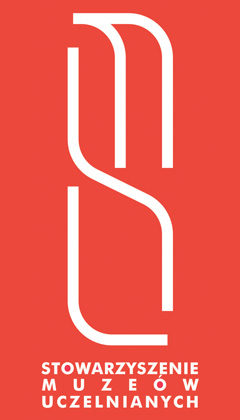Museum of the Earth
Faculty Geographical and Geological Sciences
Adam Mickiewicz University in Poznań
ul. Bogumiła Krygowskiego 10
61-680 Poznań
Tel. (61) 829 63 50
muziem@amu.edu.pl
www.muzeumziemi.amu.edu.pl
Free admission
There are no set opening times, they are updated each semester (please see the museum’s website for further
information). No more than 20 people can tour the exhibition at the same time. Guided tours available by appointment only (please book in advance via the website at: www.muzeumziemi.amu.edu.pl)
Director: Prof. Edward Chwieduk
Staff: volunteers, staff and students of the Institute of Geology of the Adam Mickiewicz University in Poznań
The history of the Museum of the Earth housed in the Faculty of Geographical and Geological Sciences at the Adam Mickiewicz University in Poznań dates back to 28 November 2008 when an exhibition of rocks, mainly agates, were loaned, free of charge, from the collection of Kazimierz Kozakiewicz (they were subsequently bought by the university on 28 September 2010). The Museum of the Earth was officially established by the rector of the university on 24 February 2009 at the request of the Council of the Faculty of Geographical and Geological Sciences. The museum’s intellectual base comprises an energetic group of volunteers consisting of staff and students of the Institute of Geology,
hence the lack of fixed opening hours. Volunteers have duty rotas when they can act as tour guides on selected days and times during the week, which differ depending on the various semesters. The museum is one of the youngest and perhaps the smallest of its kind in Poland. Nearly 2,000 unique and valuable specimens of minerals, rocks and fossils have been amassed in a small space of approx. 80 sq. metres. These comprise the collections of the Institute of Geology, which were acquired either through donations, purchases or loans. The museum has a unique collection of meteorites, including fragments of the Morasko mereorite, which UAM purchased from Krzysztof Socha. It also houses the largest meteorite in Polish museums – MEMORSS (MEteoryt MORasko Skirzewska Smuła) weighing nearly 262 kg, which was found by Magdalena Skirzewska and Łukasz Smuła. It was excavated in October 2012 from a depth of approx. two metres. It was described as the Scientific Discovery of 2012 by National Geographic Travelery. In 2011, two explorers: Steve Arnold and Geoffrey Notkin – the main protagonists of the TV documentary ‛Meteorite Men’– came across an approximately 34 kilogram fragment of the meteor in the Morasko Reserve when filming one of the episodes in the series. This fragment is now an exhibit in the museum. In addition to the collection of fragments of the Morasko meteorite, the Museum of the Earth also contains other rocks of extraterrestrial origin. These include stony and stony-iron meteorites, found in Morocco and Oman, as well as tiny pieces of the Chelyabinsk and Pułtusk meteorites. Apart from meteorites, the museum also has an exceptionally attractive collection of agates from the Katzbach (Pol. Kaczawskie) Mountains in Lower Silesia, which fascinate visitors with their vivid colours, form and unique patterns. The most noteworthy are the specimens from Nowy Kościół, which are distinguished by their large size, as well as the agates from Płóczki Górne, characterized by their vivid blue hues. The mineralogical exhibition is supplemented by, among other things, collections of Sudeten calcites, halide crystals and sulphate crystals from the Polish Lowlands, pegmatite minerals from the Strzegom-Sobótka Variscan granitoid massif and ores from the KGHM mine. In addition, there is a small collection of ore minerals from Chile and some beautiful blue calcites from Irkutsk (Slyudyanka). Since 2016 the Museum of the Earth has had an exhibition entitled ‛Polska w przeszłości geologicznej: wysokie góry, gorące morza’ (Poland in the geological past: high mountains and warm seas) which is arranged in 12 display cabinets with posters and QR codes which are linked to a specially prepared website. It takes visitors on a journey through time – starting from the Silurian and ending with the Pleistocene Epoch – through oceans and lands that no longer exist, but which left behind traces of minerals, rocks, mineral deposits and fossils. Since 2008 the Museum of the Earth has been responsible for the Lapidarium (which was opened in 1994), and which is integrated with the faculty’s infrastructure. The suggestion to set up a lapidarium for teaching purposes was met with a great deal of enthusiasm and support from the then director of the Institute of Geology, Prof. Stanisław Lorenc, who set aside part of the space for amassing exhibits. The first donations were made by stonemasons of Poznań (e.g. Henryk Walendowski) and the Voivodeship Directorate of Municipal Roads in Poznań (Wojewódzka Dyrekcja Dróg Miejskich w Poznaniu). The majority of the exhibits are – often unique – examples of the old art of stonework and sculpting. The lapidarium is divided into four themed sections: stone in the natural environment; stone in architecture and sculptures; stone in road building, and utility stone. The showpiece and pride of the museum’s collection are two large erratic boulders, weighing 100 tonnes and 20 tonnes; the smaller one is a
monument of inanimate nature. The lapidarium also contains three fragments of black oak trunks found in Poznań in the sediment of the former bed of the Warta River. They are estimated to be approx. 2,700 years old.
Prof. Edward Chwieduk














